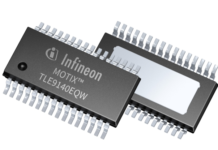
Altair Semiconductor is providing the cellular IoT technology that powers the new PassTime Encore automotive tracking device. The device uses Altair’s cellular IoT chipset, the ALT1250.
The Altair chipset’s ultra-low power consumption enables the Encore unit to maintain functionality for several years with only a small internal battery. The small battery gives Encore its groundbreaking and industry-leading small size, allowing dealers to place the device almost anywhere inside a car unobtrusively. The multiyear battery life allows dealerships and automotive lenders to track a vehicle throughout the life of the loan.
The wire-free, self-powered unit doesn’t require the services of a professional installation technician and can be placed in the vehicle in just minutes. This significantly reduces the logistical challenges and overall costs in vehicle tracking.
“Encore is a revolutionary product for auto dealers, auto finance companies, and car fleets,” said Todd Goodnight, EVP of Product Management at PassTime. “It was enabled by Altair, the only vendor capable of delivering a cellular IoT chipset with the multiyear battery life in the chassis size our solution required.”
“The Encore is a really innovative application of our chipset,” said Dima Feldman, Head of Product Marketing at Altair Semiconductors. “It utilizes the ultra-low-power consumption and compact size of the ALT1250 to facilitate vehicle tracking, and opens new opportunities in the vehicle telematics market.”
Altair’s optimized cellular IoT chipsets are the industry’s most advanced, providing the market’s lowest power consumption and enabling the longest battery life for IoT. Commercially available, they feature a hardware-based security framework and a rich set of host, peripheral and sensor interfaces, ideal for integration in a range of industrial and consumer IoT applications.



















